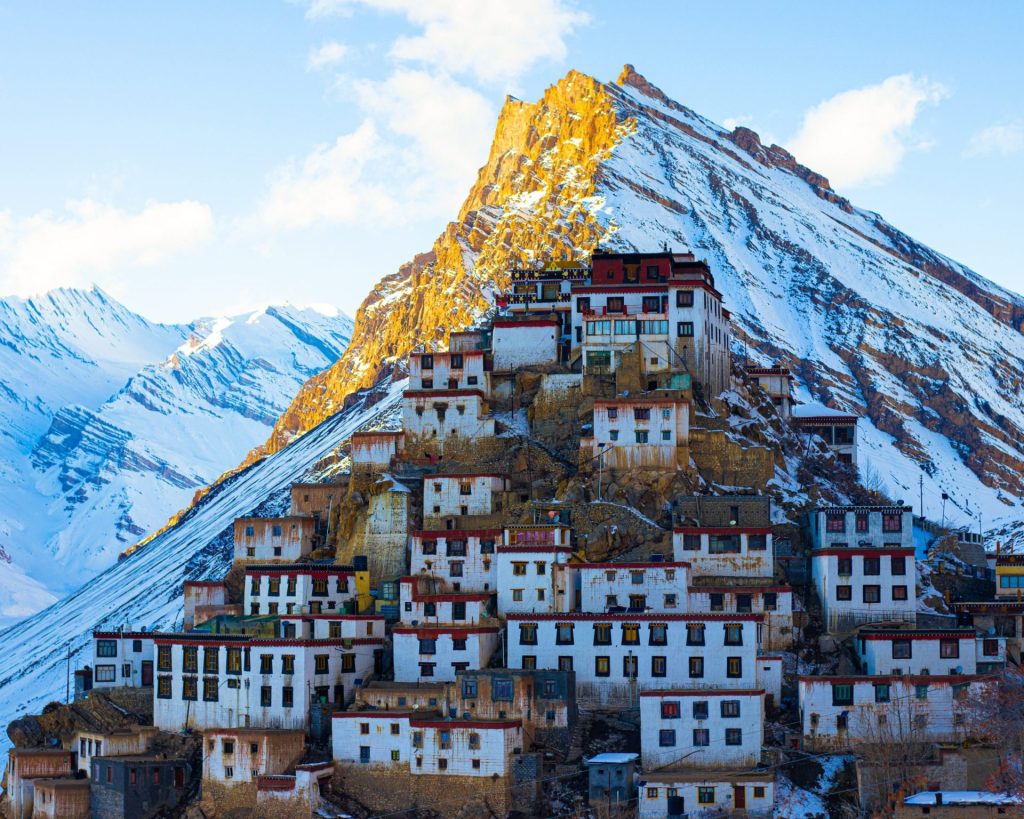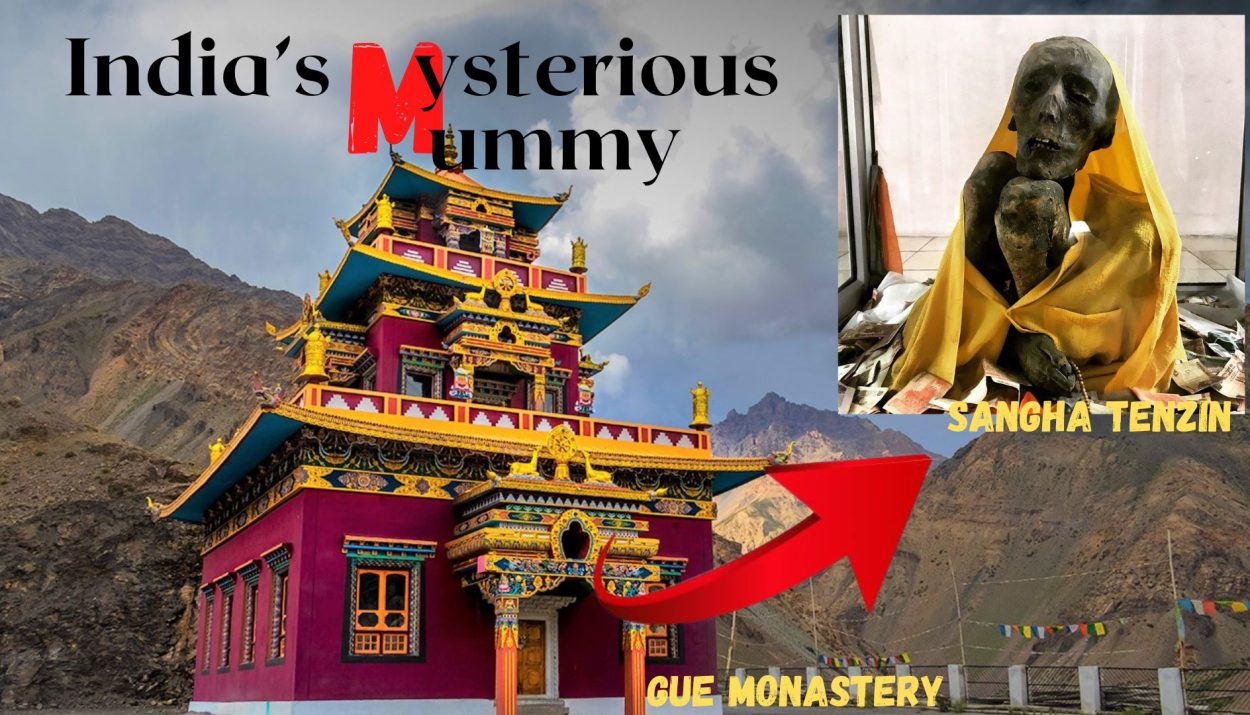Mummies in India are not as well-known as those in Egypt, but there has been an instance of naturally-preserved bodies being discovered in the country. In the following article, we are going to discuss India’s mysterious mummy- the famous mummy of Sangha Tenzin.
Famous Mummy of Spiti Valley
An earthquake occurred in January 1975 which exposed an older tomb. During excavations in 2004, the police found something that surprised everyone, the remains of a well-preserved human mummy. It was about 500 years old. Then the question arises – who was that person? Are there more mummies in this area?

Several years ago Buddhism reached Spiti Valley from Tibet. It was from here that Buddhism spread and today India’s oldest Buddhist community lives here.
A well-known mummy is the “Sangha Tenzin” mummy, which was discovered in a seated position in the Spiti Valley of Himachal Pradesh. The mummy is believed to be that of a monk who lived in the area. DNA test reveals mummy is some 500 years old. It is also believed that the monk died in the 15th century when he was approximately 45 years old. The body was naturally preserved due to the cold and dry conditions in the cave without any artificial process. Mummy’s teeth, nails, skin and head hair are safe to date. Even today the mummy is kept in a temple in Gue village. Buddhist followers still worship this mummy. The mummy symbolizes the living Buddha.
To date, there is no proof of how he became a mummy. But some people believe that he had started the process of mummification (self-mummification called Sokushinbutsu, which stripes the body away from its fats and fluids) during his lifetime. He wanted to free himself from the cycle of life and death. It must have taken him months to give up on necessities like food. Research has found that when we change our eating habits, bacteria start growing in the intestines. Perhaps the way he changed his diet, certain types of bacteria would have developed in his stomach and his body would have started rotting. Apart from this, the temperature of Spiti Valley is very low, it is cold here, the humidity is low, and the water level is low, due to all this we can say that the process of mummification must have started naturally. Some sources also indicate that the monks of that time were able to control their body temperature, and heart rate better than the common people, but yes, the work is indeed very difficult.
Mummy of Sangha Tenzin also raised many questions like whether it was an isolated case or it was a common practice of that era.
Importance of Mummy discovered in India
It is believed that the mummy found in India was preserved naturally due to the unique climatic conditions in the regions where it was discovered. The cold temperatures and dry air in the high-altitude regions of the Himalayas helped preserve the bodies, as well as the fact that many individuals were buried in caves.
The mummy found in India is of great interest to scientists and researchers, as it provides insight into the lives of the people who lived in the region hundreds of years ago. It also offers a glimpse into the natural preservation processes that can occur in certain conditions.
However, it’s worth noting that the preservation of the mummy in India is not as well-known as those of Egypt, and the preservation of the mummy in India is not as well-documented. Also, the mummy discovered in the Himalayan regions, which are not as accessible as the mummies in Egypt, which are located in more tourist regions might have also played a role in their lesser known.
In general, mummies in India, although not as well-known as those in Egypt, provide valuable insights into the lives of people who lived in the region hundreds of years ago and into the natural preservation processes that can occur in certain conditions.
References
The mummy of Sangha Tenzin in Gue village of Spiti Valley
A 500-year-old mummy – with teeth
History TV18

